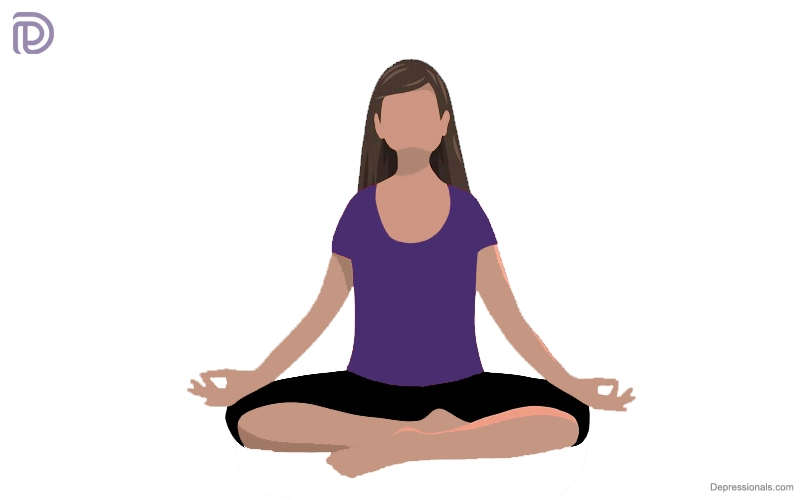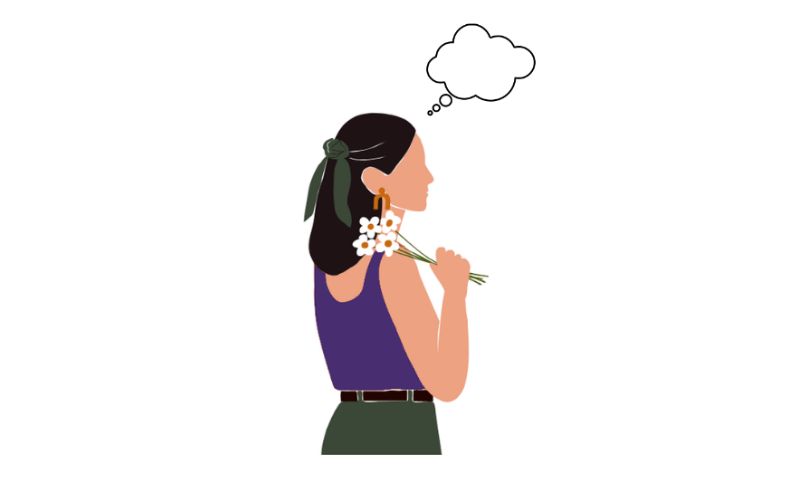Cognitive behavioral therapy (CBT) is a short-term treatment that teaches individuals new ways of thinking to change their behavior. According to CBT, people’s perception of life’s events impacts their behavior and feelings. The goal of therapy is to explore and develop solutions to everyday challenges and behaviors. Mental health conditions such as depression, anxiety, bipolar disorder, and various others can be effectively treated with this type of therapy.
Most people receive CBT through five to twenty one-on-one sessions, but some people may receive more. People can also receive CBT in a group setting. Check out this article to discover what CBT is and how it works.
Read: Applied Behavior Analysis (ABA)
What is cognitive behavioral therapy?
The Cognitive Behavioral Therapy (CBT) is a type of psychotherapy that teaches people ways of identifying and changing destructive or disturbing thought patterns that can negatively affect their behavior and emotions.
This method of treating mental health disorders aims to change the automatic negative thoughts that contribute to and worsen depression, anxiety and emotional difficulties. It aims to reduce the negative thoughts that affect the mood.
The goal of CBT is to identify and challenge these notions and replace them with more accurate and reasonable ones.
What is the process?
Psychotherapy sometimes looks back on the past to understand present feelings. Cognitive behavior therapy concentrates on the present. The concept stresses the necessity of identifying, challenging, and changing a person’s perception of a situation.
Changing perceptions and distortions
CBT aims to change any manner in which a person thinks and behaves that gets in the way of living their life in the way they want. Finding distortions or negative perceptions affecting behavior involves identifying these.
People with distorted views are more prone to:
- Unhelpful mindset
- Quick conclusions
- Seemingly catastrophic views of situations
- Only seeing positive and negative aspects of a situation
When people become accustomed to fearful or unhelpful ways of thinking, they can automatically adapt those ways of thinking. The aim of cognitive behavioral therapy is to challenge these automatic thoughts and compare them with reality.
The less distress a person feels upon understanding a situation, the better equipped they are to take action or make decisions that will be beneficial in the long run.
Read: Cocaine Addiction
Types of cognitive behavioral therapy
The aims of cognitive behavioral therapy (CBT) are to address thoughts, emotions and behaviors. CBT can take the form of structured psychotherapy or a self-help book. CBT can be used for a variety of different types of therapies, such as:
- Cognitive therapy: Focuses on identifying and correcting inaccuracies or distortions in thinking, emotions and behavior.
- Dialectical behavior therapy (DBT): Includes methods of emotional regulation and mindfulness to address thought patterns and behavior.
- Multimodal therapy: According to this theory, psychological issues should be addressed from seven varying perspectives: behavior, affect, drug/biological considerations, imagery, cognition, sensation and interpersonal factors.
- Rational emotive behavior therapy (REBT): Identifying and challenging irrational beliefs is a part of the process. Learning how to change these beliefs is also part of the process.
Cognitive behavioral therapy uses a variety of approaches, all work to address underlying thinking patterns which contribute to psychological distress.
Techniques of CBT
The aim of cognitive behavioral therapy is to help people overcome their negative thoughts by using a variety of strategies. You could use journaling, role-playing, mental distraction and relaxation techniques.
Read: Opioid Use Disorder
Recognizing negative thoughts
The ability to recognize thoughts, feelings, and situations that can impact maladaptive behavior is crucial. People who struggle with introspection may find the process challenging, but they can ultimately discover self-awareness and gain insights that are crucial to healing.
Learning new skills
The first step in learning new skills is to practice them in a real-world environment. Individuals who suffer from substance use disorders might practice new coping skills and rehearse techniques for avoiding or coping with social situations that could stimulate relapse.
Setting goals
Goal-setting can help you improve your health and wellbeing as you recover from mental illness. In CBT, a therapist can teach you how to set SMART goals and to focus on the process instead of the end result by teaching you how to identify goals, identify short- and long-term objectives, distinguish between short- and long-term expectations, and identify SMART goals.
Problem-solving
The ability to solve problems can be very helpful in reducing the negative effects of psychological and physical illness, as well as identifying and solving problems that arise from life stressors of any size.
The following steps are often involved in solving problems in CBT:
- Identifying the issue.
- Listing potential solutions.
- Analyzing their strengths and weaknesses.
- Choosing the most suitable solution.
- Applying it.
Read: Shared Psychotic Disorder
Self-monitoring
The act of self-monitoring, also referred to as dairy work, is an important aspect of cognitive-behavioral therapy. It involves keeping track of your behaviors, symptoms, and experiences over time and sharing them with your therapist.
It is important to maintain self-monitoring in order to provide your therapist with the information he or she needs to provide the most effective treatment. If you are struggling with an eating disorder, self-monitoring may include keeping track of eating habits and any thoughts or feelings that may have accompanied the consumption of that meal or snack.
How CBT can help
Individuals can learn to focus on their present thoughts and beliefs through cognitive behavior therapy as a short-term treatment. It is commonly used in the treatment of the following conditions:
- Addiction
- Anger issues
- Anxiety
- Bipolar disorder
- Depression
- Eating disorders
- Panic attacks
- Personality disorders
- Phobias
Psychotherapy can also be used to treat the following medical conditions, in addition to mental health problems:
- Persistent pain or serious illnesses
- Separation or divorce
- Loss or grief
- Insomnia
- Low self-esteem
- Relationship issues
- Stress management
Read: High Functioning Anxiety
Benefits of cognitive behavioral therapy
Behavioral treatment is based on the belief that thoughts and feelings influence behavior in a fundamental way. People who spend a lot of time considering plane crashes, runway accidents, and other air disasters, for example, may refrain from traveling by air.
Cognitive behavior therapy involves teaching people that they can influence how they interpret and deal with things around them, even though they do not have control over everything around them.
There are several key benefits associated with cognitive behavior therapy, including:
- Being aware of the negative, often unrealistic thinking patterns that lower your mood and feelings will enable you to engage in healthier thinking patterns.
- Treatment results can be seen after five to twenty sessions; for example, improvements can be seen after five sessions.
- Many types of maladaptive behavior have been successfully treated with it.
- The cost is usually lower than with some other methods of therapy.
- Both online and in-person, it has proven to be effective.
- People without psychotropic medication may benefit from it.
CBT is one of the best types of psychotherapy because it helps clients discover coping skills that can be useful in the present as well as the future.
Read: How to Get Peace of Mind
Effectiveness of CBT
Aaron Beck, a psychiatrist in the 1960s who noted that certain ways of thinking can cause emotional difficulties, developed cognitive behavioral therapy. The cognitive therapy process is based on Beck’s concept of “automatic negative thoughts”.
The cognitive approach to behavior modification draws upon thoughts and feelings to modify behavior, rather than association, reinforcement, and punishments characteristic of earlier behavior therapies.
One of the best-studied forms of treatment today is cognitive behavioral therapy, which is effective in treating a variety of mental conditions, including anxiety, depression, eating disorders, insomnia, obsessive-compulsive disorder, panic disorder, post-traumatic stress disorder and substance abuse disorder.
- Eating disorders are treated most effectively with cognitive behavioral therapy.
- People with insomnia, as well as those afflicted with pain or mood disorders like depression, have found that CBT is beneficial.
- Treatment of anxiety and depression in children and adolescents with cognitive behavioral therapy has been scientifically proven effective.
- According to a 2018 meta-analysis of 41 studies, cognitive behavior therapy improved symptoms in patients with anxiety disorders including obsessive-compulsive disorder and post-traumatic stress disorder.
- CBT is supported by a large body of empirical research that provides benefits in the treatment of substance use disorders, such as improving self-control, avoiding triggers, and developing coping mechanisms for everyday stressors.
Treatment is directed at very specific goals, and results can be measured relatively easily, making CBT one of the most researched types of therapy.
Read: Maladaptive Daydreaming
Getting started with CBT
Several psychological issues can be treated effectively with cognitive behavior therapy. You may benefit from this type of therapy if you or someone you love follows these steps:
- Talk to your doctor: For a listing of licensed professionals in your local area, visit the National Association of Cognitive-Behavioral Therapists.
- Make sure your preferences match: If you would prefer face-to-face treatment or online therapy, that is up to you.
- Speak with your health insurance company: The number of CBT sessions they cover per year if they offer CBT.
- Initial sessions are likely to be similar to getting a medical checkup: It includes filling out paperwork like insurance info, HIPAA forms, current medications, medical history and a therapist-patient contract. It’s likely you’ll fill these out online if you’re doing online therapy.
- Be ready to answer questions: You must provide details about what prompted your visit to therapy, your symptoms, your childhood, your education, your career, your relationships (personal, romantic, etc. ), and your present living situation.
Bottom line
Cognitive behavioral therapy is a type of psychotherapy. The ability to change perception affects a person’s mood and behavior in a positive way. There is evidence that cognitive behavioral therapy can help with a wide range of mental health issues, from depression to chronic pain.
During the therapeutic process, a counselor helps clients determine their goals and expectations. Participants must actively participate in the therapy process to gain its benefits. If you’re interested in CBT, you should consult a professional. Ask your doctor which local specialists are skilled in CBT.






Nice post. I study something more difficult on totally different blogs everyday. It would always be stimulating to learn content from other writers and observe a bit of something from their store. I’d want to use some with the content material on my weblog whether you don’t mind. Natually I’ll provide you with a link in your web blog. Thanks for sharing.